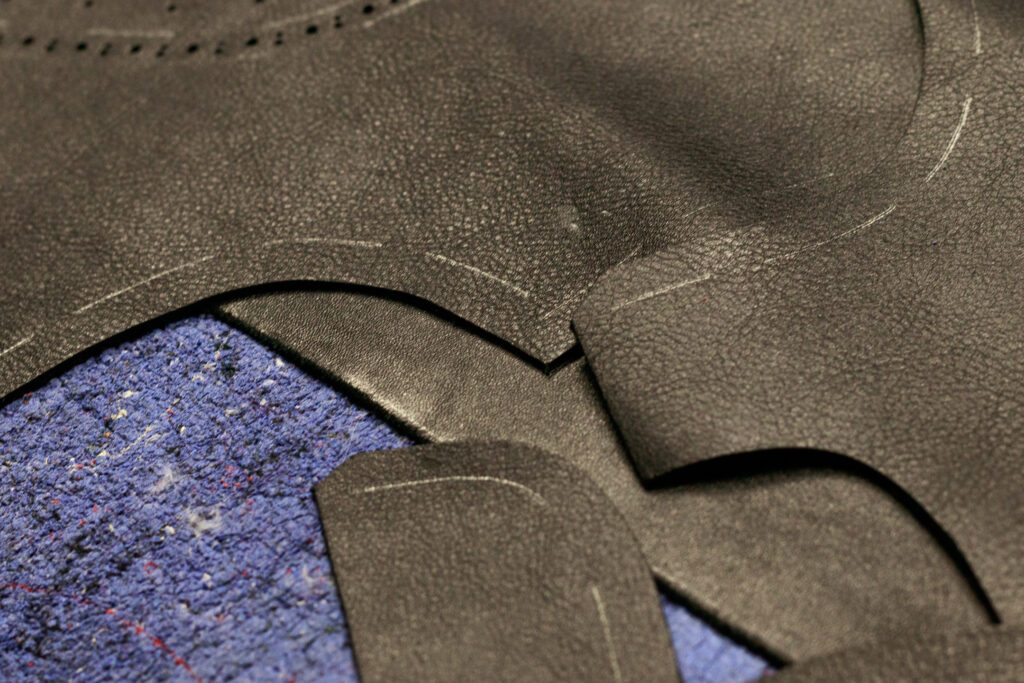

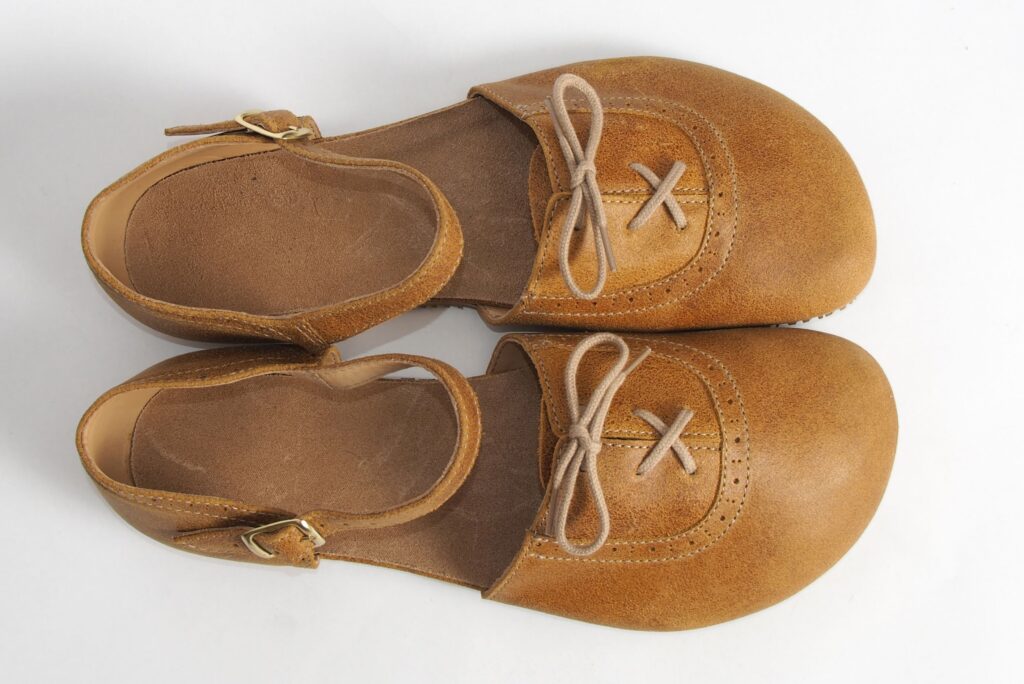
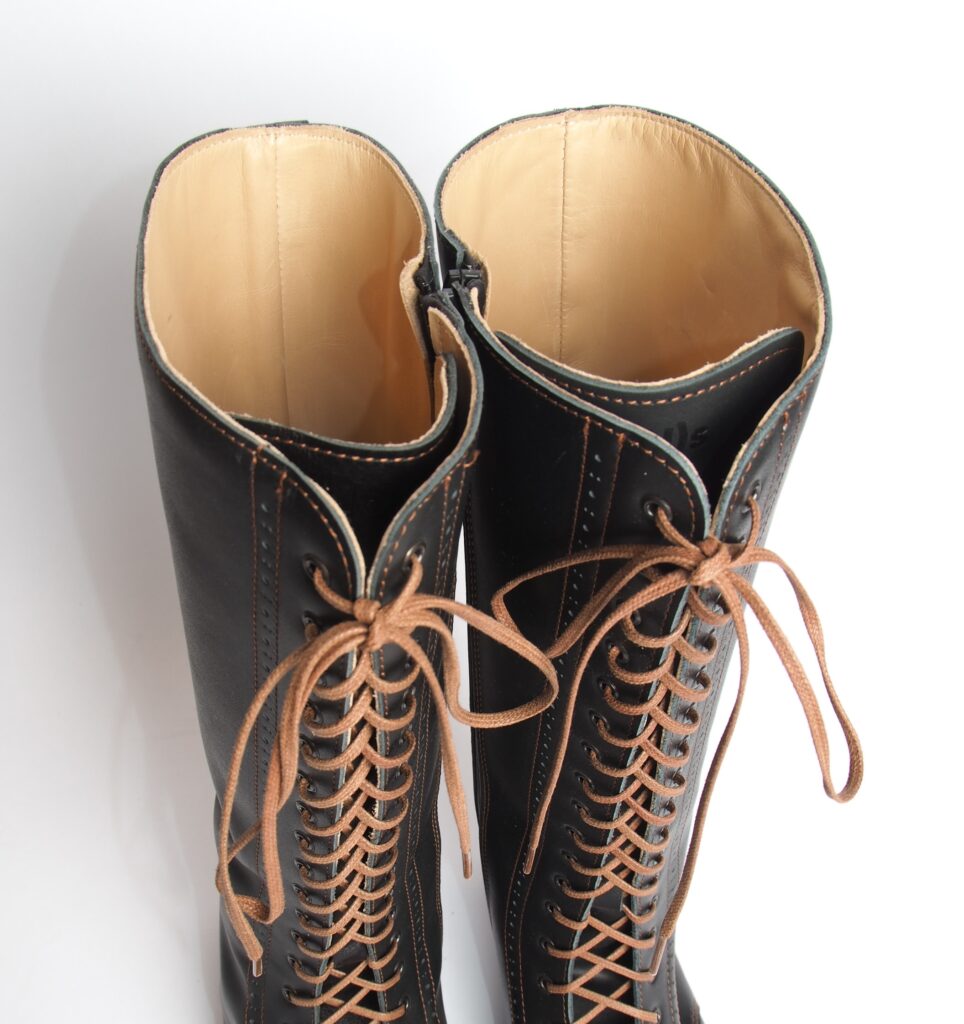
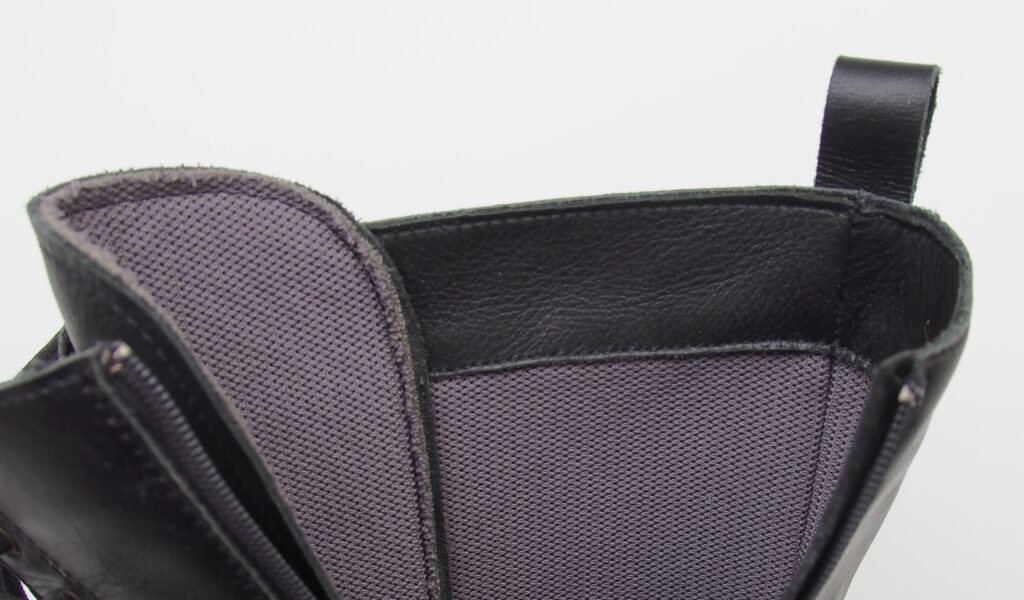

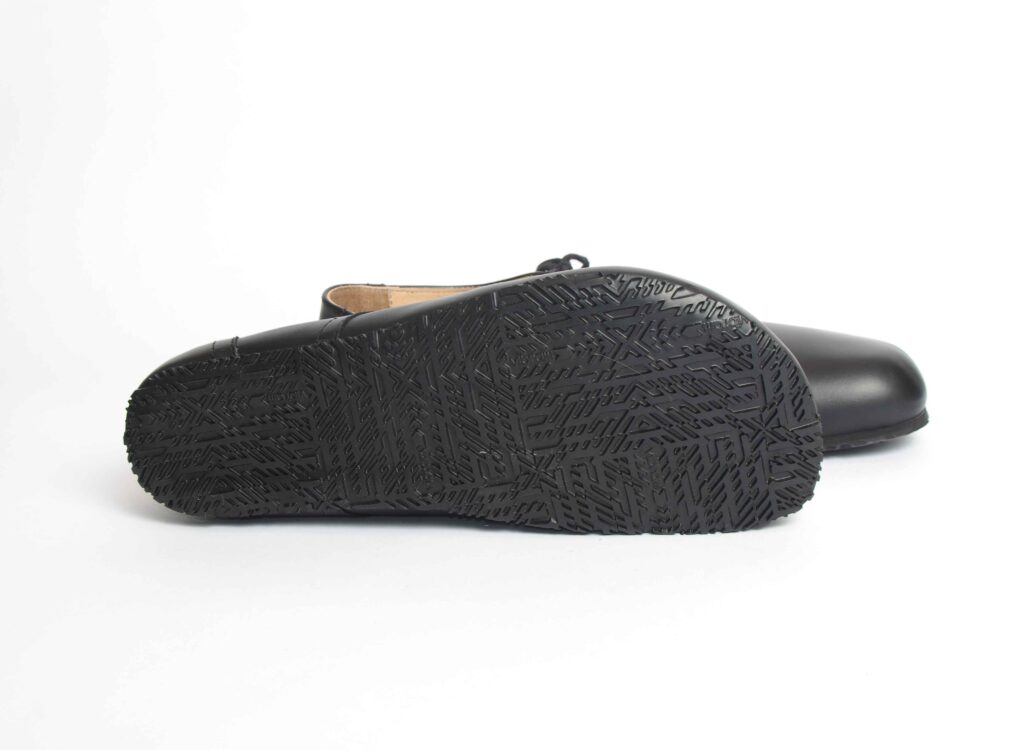
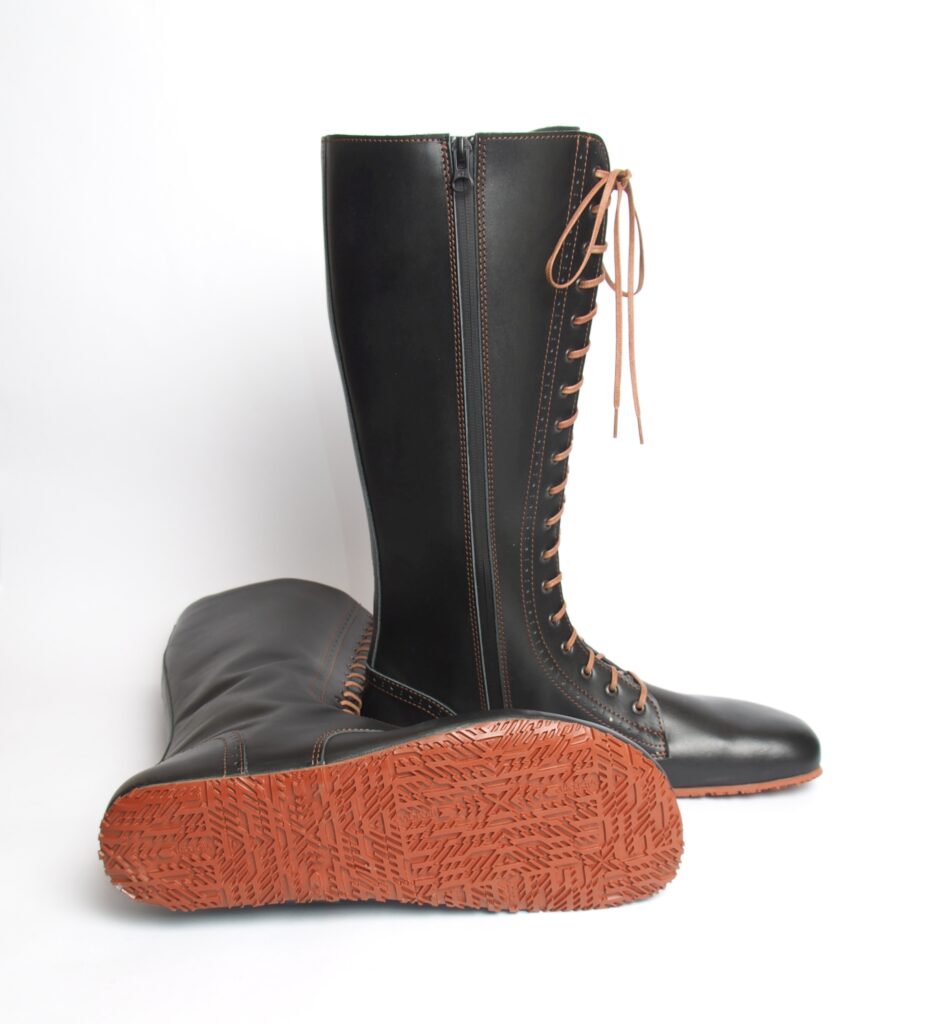

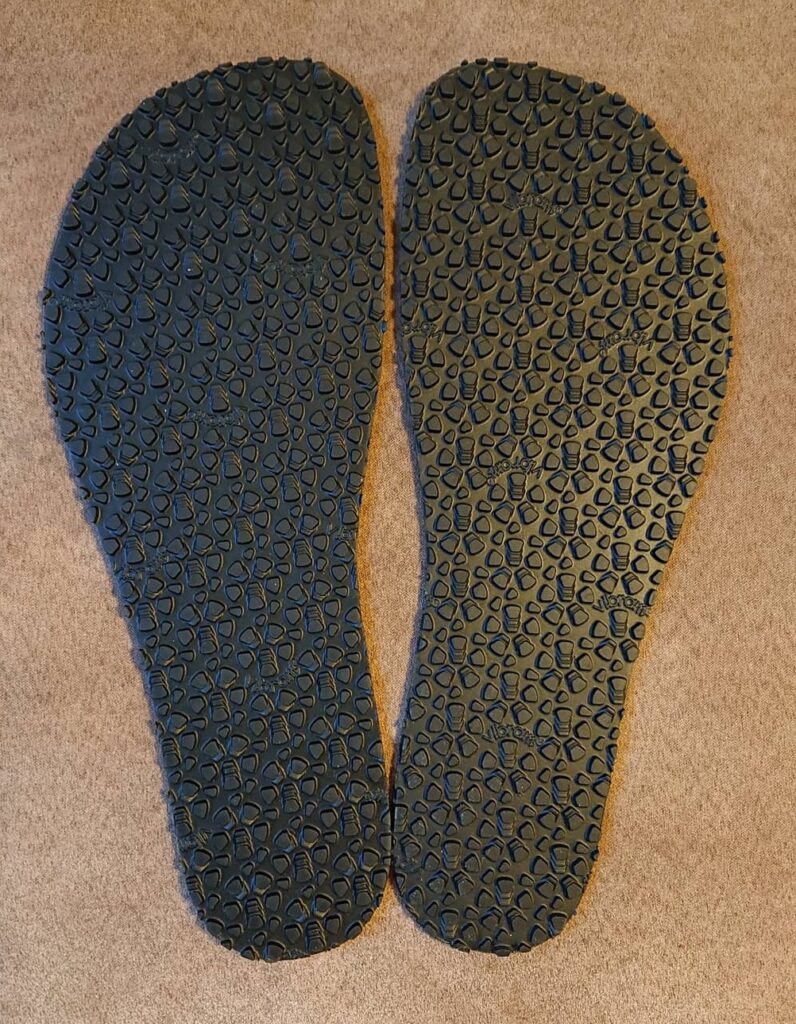
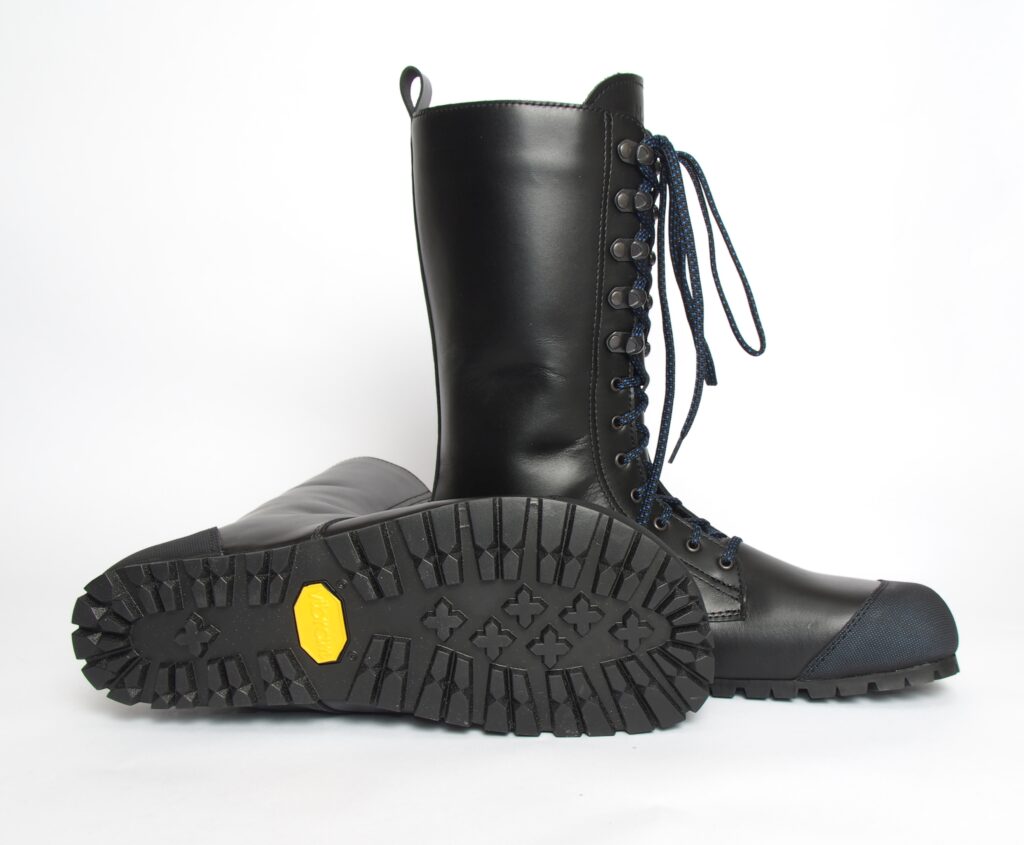
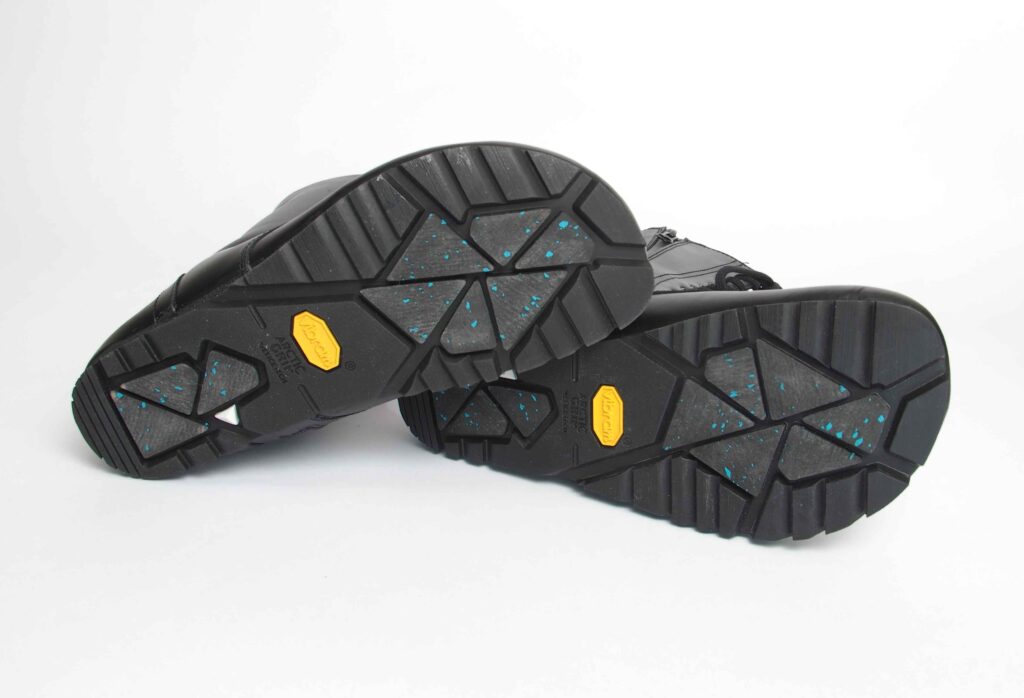
Is a shoe just a piece of leather or something more?
In order to make functional and comfortable shoes, you may not need much – a piece of leather or other suitable material, a few tools and knowledge/skills. This is how shoes have been made for centuries, let’s take Estonian traditional one-piece shoes for example – basically a piece of leather that is attached to the foot with string or laces. Simple!
But in order to make a modern, comfortable, functional shoe that meets modern conditions, much more is needed. Let’s talk a little more about what No(N)s consist of and how they are made.
Uppers
At the moment we use leather as the upper material for all No(N)s. Why, on what grounds, etc., in another post. In the case of most models, this is high-quality chrome leather. For models (A-B) and (R-B), the toe and heel are made of chrome tan leather with a more wear-resistant rubber coating. Beneath this top layer of skin are hidden reinforcement materials.
Reinforcement materials
In order for the shoe to keep its shape and not become misshapen, various reinforcement materials have been used for a long time. Historically, leather and linen cloth reinforced with glue have been used for this purpose. Today, artificial materials are increasingly used for this – they are cheaper and easier to “make do what we want”.
Since we have preferred to use natural materials in the production of No(N)s from the beginning, the nose and heel parts of the first batches were reinforced with glued cotton jersey reinforcements. Their advantage is flexibility, low thickness and lack of excessive stiffness, and the ability to stretch if necessary.
Now that we have received feedback and experience, we have come to the decision that the same cotton reinforcement works best in the nose area. However, we have replaced the heel reinforcement material with thermoplastic. The main reason here is precisely this aspect of stiffness and stretchability. We don’t really want the heel of the shoe to stretch or sink. We want it to hold its shape and be soft enough to not hurt the foot, but not too soft to sag too much and lose its shape. Depending on the model, we currently also have variants with a softer heel, but all the shoes currently produced already have a stronger heel.
It is very important to think about the extent to which they are reinforced when designing shoes. And there, too, big differences come in for different manufacturers.
It is important for us that there are as many reinforcements as necessary and not more, not so much that it interferes with the natural movement and flexibility of the foot. And that’s why the heel reinforcements of our shoes, including boots, are quite low compared to the shoes of many other manufacturers. In shoes it might not be so noticeable, but in boots the difference is huge, especially when compared to traditional boots.
While in the case of many traditional shoes (e.g. combat boots) the heel part of the shoe is rock hard (and the toe as well) and high, reaching at least to the joint, and the ankle mostly bends inside the shoe rather than with the shoe, in No(N)s the heel part is lower and the reinforcement is even more lower, so that the joint is soft and flexes freely with the foot, without restricting the mobility of the joint. The toe cushioning is sufficient to keep the shape of the shoe, but ready to adapt to the specifics of the foot and toes, and ends before the cross arch so as not to limit the foot’s mobility.
All reinforcement parts are attached with glue between the upper and the lining.
Lining
As lining material, we use high-quality cowhide for most models. Pigskin is also generally used for lining, but it doesn’t look as nice, although it has quite similar wear resistance. In the case of boots (A-B) and (R-B), we have deviated a bit from our general direction of using predominantly natural materials, and the lining of these boots is made of synthetic textiles. Why? Of what?
The material we use is called Dermo Coolmax Dry and is used in hiking, military and higher quality sports shoes. It has good abrasion resistance, temperature regulation and very good moisture conductivity (ie, even if water gets into the boot, the feet will not feel wet).
Accessories
In addition to the aforementioned materials, the uppers also require thread – we use synthetic thread primarily because of its durability, and eyelets and, in some cases, also hooks. In the case of shoes, we use invisible eyelets, which are not visible at all when viewed from above and are only visible when viewed from the lining.
Laces
Most of our models have cotton shoelaces. The blue-speckled boot laces are synthetic and woven specifically for this model. The cotton laces on the boots and shoes with brick red soles were hand-dyed to match just for this special batch. Haine, a local Estonian shoelace manufacturer, produces shoelaces as a special order for us. Their good quality and selection suits us best.
Insole
Moving from top to bottom and inside out, we come to the insole. The inner sole of all No(N)s is made of leather, and in an unconventional way, the leather has just been turned, i.e. raw side up. Why? Traditionally, the insole is nice and smooth and it’s good to print logos etc., but … this kind of insole is slippery.
And that means the foot can slide inside the shoe into the toe of the shoe, leaving the heel empty and forcing the toes into the crunch. And that is neither healthy nor comfortable. In order to prevent your foot from slipping in our shoes, the insole of all No(N)s is made of leather with the maximum possible slip resistance.
Pinsole is hidden under the insole – the construction sole around which the shoe is built. Historically, leather has been used for this. Nowadays, special cardboard is mostly used for this purpose, which does not withstand waterlogging and crumbles over time. Sometimes a cardboard-like product made from “dust” of glued leather is also used, but for No(N)s we use the most durable, most water-resistant and heavy-wearing, longest-lasting and traditional material – leather.
Our pinsole leather is vegetable tanned right here in Estonia and is thin and elastic. Some post-tanning stiffness is replaced by softness over time, but elasticity and durability remain essentially indefinitely. The leather is not afraid of getting wet or vigorous bending/moulding, it only becomes softer and more comfortable. Coming from the factory, this pinsole material even looks a bit like cardboard, but it becomes soft like a textile when you mold it. But why not use soft leather right away? There is a simple reason for this. The pinsole must initially be stiff enough to stay in shape under the sole of the last so that the shoe can be built around and on top of it.
The edges of the upper are glued to the edges of the lower side of the pinsole. The space between these edges is filled with a so-called filler material, and the sole is glued underneath. The filler material is synthetic, just like the soles we currently use for most models. As the outsole, we mainly use Vibram products, which are considered to be the best sole materials. On special order and on our historic model, we also use vegetable tanned leather as sole material.
Sole
We currently use three different sole materials (in addition to leather) – first of all Vibram Arrows – 4.5 mm thick and quite good grip, and at least the light version, which we use the most, does not leave streaks on the parquet. On the (A-B) and (R-B) models, we used to use the Vibram Claw, which is a bit thinner but very grippy.
However, the last batch (A-B) was made on a Vibram Jankaut sole, which is a little thicker (8 mm), but is even better suited to different terrains and has somewhat better cold insulation. And it is more like traditional soles, although it is flexible and foot-friendly. The sole of the winter boots (W-B) is also thicker, with better thermal insulation and Arctic Grip elements, which should help to stay in place even on wet ice.
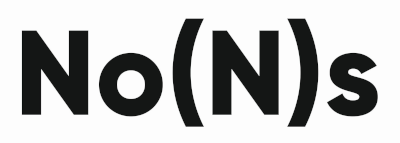



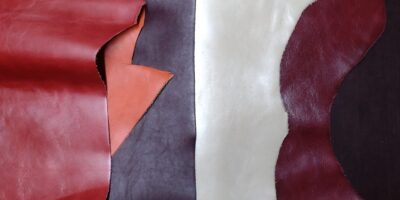
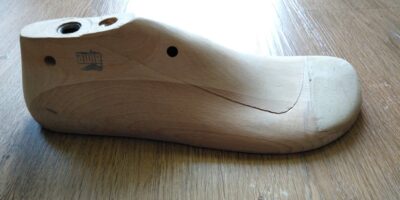
Leave a Reply